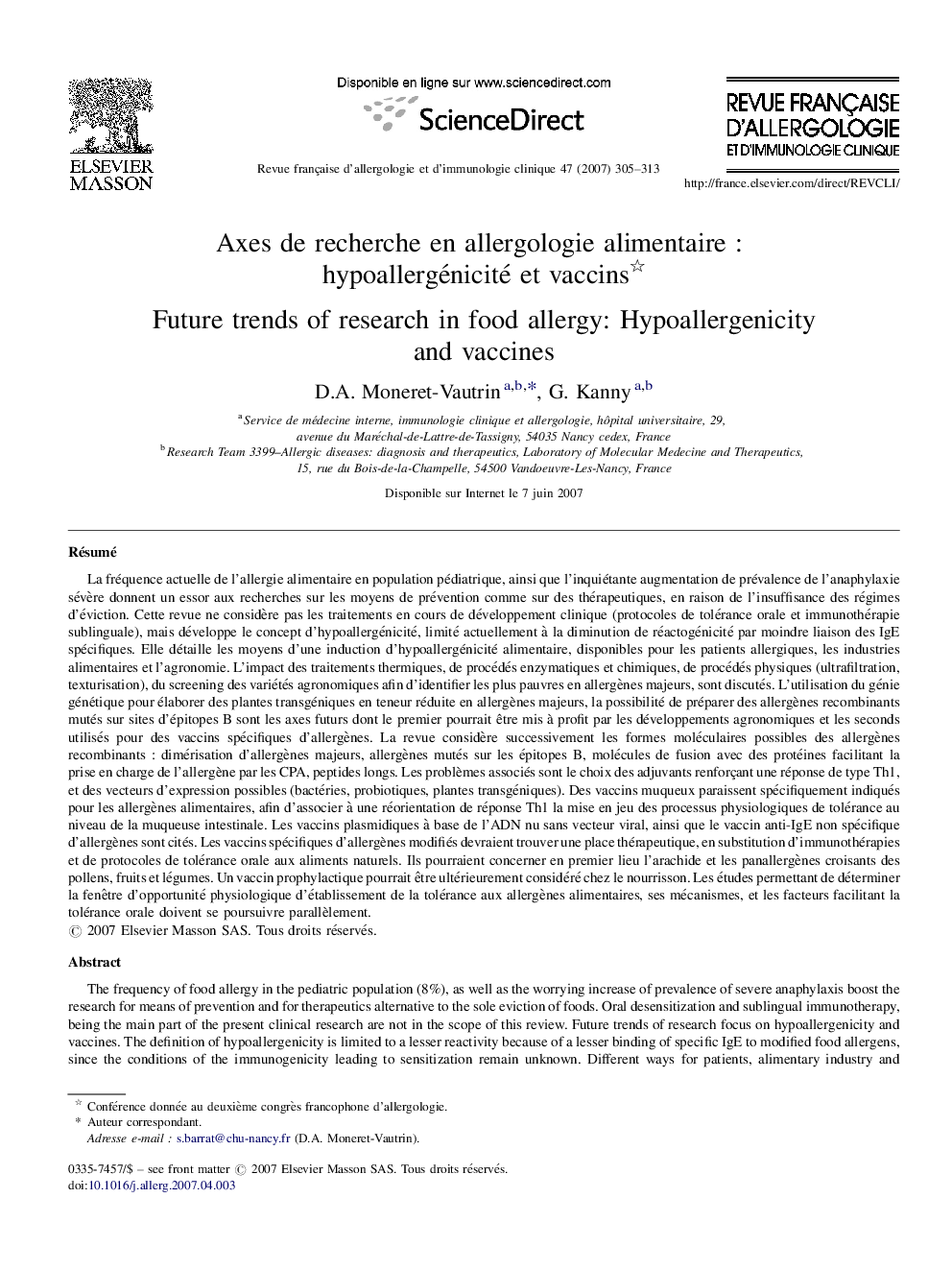| Article ID | Journal | Published Year | Pages | File Type |
|---|---|---|---|---|
| 2770282 | Revue Française d'Allergologie et d'Immunologie Clinique | 2007 | 9 Pages |
Abstract
The frequency of food allergy in the pediatric population (8%), as well as the worrying increase of prevalence of severe anaphylaxis boost the research for means of prevention and for therapeutics alternative to the sole eviction of foods. Oral desensitization and sublingual immunotherapy, being the main part of the present clinical research are not in the scope of this review. Future trends of research focus on hypoallergenicity and vaccines. The definition of hypoallergenicity is limited to a lesser reactivity because of a lesser binding of specific IgE to modified food allergens, since the conditions of the immunogenicity leading to sensitization remain unknown. Different ways for patients, alimentary industry and agronomical research are detailed: heating and cooking, enzymatic and chemical treatment of natural foods, physical treatments (texturization, ultrafiltration,â¦), screening of natural varieties in order to characterize some of them with a lower level or an absence of major allergens. Bioengineering of plants with a reduced level of major allergens, and site-directed mutagenesis on B epitopes could be helpful for a safer nutrition and vaccines. Possible molecular forms aimed at vaccines are considered: recombinant natural allergens, modified recombinant allergens by dimerisation, site-directed mutagenesis, fusion with other molecules, long peptides,⦠Associated considerations are the choice of adjuvants promoting a Th1 response, as well as vectors for the expression of recombinant food allergens: bacteria, probiotic ones, or poorly allergenic plants. Mucosal vaccines could be especially interesting for food allergens in order to add specific mechanisms of tolerance arising in the intestinal mucosa to the reorientation towards a Th1 and TREG response. Plasmidic DNA vaccines and anti-IgE vaccines are an object of research without any application in the near future. Therapeutic vaccines for food allergens might be substituted to oral desensitization and could be applied first to peanut allergy and to cross allergy between pollens and fruit or vegetable linked to panallergens. Prophylactic vaccines might be a second step for atopic infants, insofar as more knowledge could be obtained of mechanisms and enhancing factors of oral tolerance to food allergens and the “opportunity window” for the establishment of oral tolerance.
Keywords
Related Topics
Health Sciences
Medicine and Dentistry
Anesthesiology and Pain Medicine
Authors
D.A. Moneret-Vautrin, G. Kanny,
